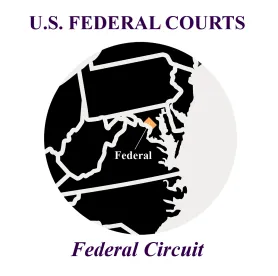On March 24, 2022, the Court of Appeals for the Federal Circuit issued a precedential opinion in Hunting Titan, Inc. v. Dynaenergetics Europe GMBH, affirming — on a procedural technicality — a precedential decision of a Precedential Opinion Panel (POP) of the Patent Trial and Appeal Board (PTAB) that granted a motion to amend claims in an inter partes review (IPR) proceeding. The interesting part of the Federal Circuit opinion is the extensive discussion, particularly in the concurring opinion, of the PTAB’s ability to raise unpatentability grounds sua sponte.
The Original Petition, the Motion to Amend, and the PTAB Final Written Decision
In the underlying IPR proceeding, Petitioner argued that a prior art reference, Schacherer, anticipated the claims. Patent Owner opposed Petitioner’s position, and also filed a contingent motion to amend, adding three new limitations. In opposing the motion to amend, Petitioner argued that Schacherer rendered the substitute claims obvious.
The PTAB issued a final written decision (FWD), holding that Schacherer met each of the newly added limitations in the proposed substitute claims. Accordingly, the PTAB denied the motion to amend. Of interest here is that, in opposing the motion to amend, Petitioner did not argue that Schacherer anticipated the proposed substitute claims. It was the PTAB that found anticipation — on its own.
The POP Opinion
Patent Owner requested rehearing and POP review of the FWD, arguing, among other things, the PTAB lacked discretion to rule on the motion to amend based on an argument that Petitioner had not advanced. The POP granted the motion to amend, finding that Petitioner had not met its burden to show that the amended claims were unpatentable.
The POP also found that the PTAB should not have raised the anticipation ground on its own. The POP found that the PTAB’s sua sponte basis for denying the motion to amend – anticipation by Schacherer – was not “readily identifiable and persuasive.” In so holding, the POP took issue with one of the PTAB’s conclusions that Schacherer met one of the added claim limitations.
The POP also provided an extensive discussion of the need to rely on the adversarial nature of IPR proceedings to resolve challenges to issued patents. We discussed the POP decision here, and the subsequently-enacted regulations to address the burden of persuasion in PTAB proceedings (37 CFR 42.121 and 42.221) here.
The Federal Circuit Opinion
On appeal, Petitioner argued that the PTAB had an obligation to raise the anticipation ground sua sponte, and that the POP committed legal error in reversing the PTAB decision. The Federal Circuit disagreed, finding no such requirement, but also holding that the PTAB may identify sua sponte a patentability issue for a proposed substitute claim based on the prior art of record.
Regarding the POP’s rejection of the PTAB’s sua sponte finding of anticipation, the Federal Circuit noted that Petitioner did not challenge the POP decision as an abuse of discretion, thereby forfeiting the argument. As a result, the Federal Circuit had to affirm the POP decision. However, the Federal Circuit noted the following:
-
In filing the original petition to institute the IPR proceeding, Petitioner argued that Schacherer anticipated the original claims.
-
In ruling on the motion to amend, it seemed logical that the PTAB would factor into its analysis whether the proposed substitute claims overcame the anticipation ground.
-
Ultimately, the PTAB denied the motion to amend, finding the proposed substitute claims unpatentable on the same ground that Petitioner raised with respect to the original claims.
Based on these three items, it struck the Federal Circuit as “odd” that the POP determined that the anticipation ground was not “readily identifiable and persuasive.”
The Federal Circuit also expressed concern with the POP’s approach to giving the PTAB discretion to raise patentability issues sua sponte only in rare circumstances, noting that the basic purpose for IPR proceedings is “to reexamine an earlier agency decision and ensure, as the US Supreme Court held in Oil States Energy Servs., LLC v Greene’s Energy Group., LLC, ‘that patent monopolies are kept within their legitimate scope’”. The Federal Circuit also noted its prior holding in Regents of Univ. of Minn. v. LSI Corp. that fundamentally, IPR proceedings continue to be a “second look at an earlier administrative grant of a patent” (citing Cuozzo Speed Techs., LLC v. Lee).
Judge Prost concurred in the decision, and wrote separately to discuss her concerns with the POP’s handling of the PTAB’s sua sponte patentability actions, stating:
Whatever the “readily identifiable and persuasive” standard means, [the POP] should have let the Board do what it did here: evaluate whether the prior-art reference that anticipated the original claims also anticipated the new claims. Such an evaluation can hardly be deemed overly zealous or creative on the Board’s part. Indeed, among potential unpatentability bases to raise sua sponte, this would seem to be square one.
Judge Prost also stated that where, as here, the PTAB had devoted extensive resources to analyzing Schacherer, the PTAB should have “the ability to use that acquired expertise in making their own patentability determinations before letting new claims out the door”. The judge noted that in Nike, Inc. v. Adidas AG, the Federal Circuit approved the PTAB’s sua sponte unpatentability finding based on a piece of prior art of record on which Petitioner did not even rely in opposing Patent Owner’s motion to amend.
Takeaways
-
In ruling on a motion to amend, it is reasonable for the PTAB to see whether the proposed substitute claims overcome Petitioner’s arguments for unpatentability of the original claims, even if Petitioner does not raise those arguments in opposing the motion to amend.
-
In appealing a holding of the PTAB or a POP, looking for abuse of discretion as well as legal error can be useful. Abuse of discretion can be a heavy burden to meet, but not so heavy as establishing that a PTAB or POP ruling lacked “substantial evidence,” which is the standard that the Federal Circuit uses most often in deciding appeals in IPR proceedings.
-
While not stated expressly, when the PTAB determines whether proposed substitute claims overcome unpatentability arguments in an original petition, the PTAB is performing some form of examination function, in addition to the function of adjudicating IPR proceedings between adversaries.




 />i
/>i

